
In my masters' work I deal with the nature of color. The work is based on the principles of imagemaking in information technology and conventional print. Its sequent possibilities are analyzed through three different mediators with different features: on digital screen, through water and in print.
Noise and silence
The generator of the process is noise and the absence of noise - silence. Noise is not the output or the product of the installation, but the activator which drives the movement of colors / images.
Technology — process — construction
1-—
The first out of the three above mentioned medium is digital screen. The principle of the software visualization of the three ultimate digital colors (RGB - red, green, blue) is the following: the saturation of each color is defined between 0 and 255. The additive blending of the color-values results the whole spectrum on the screen including the scale of greys - where the value of R, G and B is always the same. White is the maximum, black is the minimum saturation of the grey scale. The mechanism is the following: the phenomena on the screen is generated by environmental noises, which are perceived by a built-in microphone forwarding them to the software that creates images out of noises. Low frequency noises direct R (red) lines', middle frequency noises drive the G (green) lines', and high frequency noises direct the B (blue) lines' location, saturation and the dynamic in the movements. By the decrease of the noise level the extent of the structures' movement out of their basic state decreases as well. In the case of silence, the line structures cover each other and produce white color. The image on the screen is being evolved out of the movements of the red, green and blue line structures. During this movement, the colors cover each other in different extent, which results in continuous variation of lines and colors.
2 —
The image - generated out of noises by the software - is projected through water and reflected onto the wall by a mirror. Water is a natural medium that acts as a prism. In certain circumstances (the light's angle of incidence is 42 degrees) white light passing through water drops splits into the spectrum of colors. This is rainbow effect. Prism effect is the opposite of digital color blending, where white is not the outcome, but the source. The installation is a transcription machine, which converts an analogous medium (noise) into a digital medium (light/image). The digital image is then converted into an analogous image by being projected through water.
3 —
The third element of the project is another analogue medium: a book, in which the digital images of the installation are transcribed to paper. Therethrough the additive blending of colors results black as an end result of the process of white light becoming darkness. The book's index illustrates the relation between the images and the R, G, B colors that create them, and the noises that generate the colors. The book can also be interpreted as the visualization of In a Landscape by John Cage, which is constructed out of screenshots saved in each 10th second by the software. The image sequences are interrupted by such texts which are in relation with the basic concepts of the project. The book is in the lack of any kind of textual explanation. By the complex of the additive colors and texts the reader is capable to comprehend the book as a whole. There is a register in the book that connects the image sequences and their analytic explanation, and indicates the continuum of the composition at the same time.
The project is a layered multimedia package, in which such interrelations are registered, which highlight the technological nature of art . At the same time they are reflections on contemporary relations in regards of modernity and tradition. The technological progress is a self-amplifying process creating rapid and shrill milieu. As an indirect effect and its inevitable counterpoint - silence, slowliness and the need of spiritual focus come into existence.
Silence and light — absence and presence
Light and silence are two elementary and antinomic phenomena of the surrounding world. Their existence can only be perceived indirectly. Hereby silence is comprehended as the absence of noise, and light (white color) as the opposition of darkness (black color). Light can only be seen when something reflects it. If no refraction occurs, light remains invisible in darkness. Elements of silence is the parallel study of the paradoxical nature of the two phenomena (light and silence), in which silence and white color are treated as the resting points.
The lack justifies the existence of the missing entity. Something can be absent only if exists, eventhough not present. Therefore the absence means maximum presence, in a sense. In the cases of white light and black print, the absence of colors is the utmost presence of their maximum saturation. Concerning a scale of sounds, silence is the lack of noise.
Black, whithe and the spectrum
The visual termini of the project are black and white. The spectrum of all colors spreads between these extremities. While in nonmaterial digital imagemaking (based on the principle of wave-length) the overlap of the maximum saturation of three basic colors (Red, Green, Blue) ends in white, the material print colors produce black.
——
Mestermunkámban a szín természetével foglalkozom. Ezen belül az információs-, illetve a nyomdai technológiában alkalmazott képmegjelenítés elveit, az ezekből következő lehetőségeket veszem alapul és vizsgálom három egymástól eltérő tulajdonságokkal rendelkező médiumon keresztül, digitális kijelzőn, vízen keresztülvetítve és nyomtatásban.
Hang és csend
A csend elemek folyamatként értelemzehtő, melynek generátora a hang (zaj) illetőleg a csend, mint a hang partikuláris esete (a hang hiánya). A hang nem outputként, nem produktumként van jelen, hanem az installáció aktivátoraként, működtető motor szerepet tölt be, azaz a színek mozgásának előidézője.
Technológia — folymat — felépítés
1 —
A már említett 3 médium közül az első a digitális kijelző, ahol a három digitális alapszín (RGB (red, green, blue / piros, zöld, kék)) szoftveres megjelenítésének elve a következő: az egyes alapszínek telítettsége 0 és 255 értékhatárokon belül van meghatározva. A színértékek additív keverése eredményezi a képernyőn (kivetítőn) látható teljes színspektrumot, beleértve a szürke tartományt is, ahol a három szín értéke minig azonos. A fehér e szürke tartomány maximális (255), a fekete a minimális (0) telítettséget jelenti. A működési elv a következő: a látványt környezeti hangok generálják, amelyeket egy beépített mikrofon érzékel, továbbítva azokat a képeket előállító szoftvernek. A alacsonyabb frekvenciájú hangok irányírják az R (piros), a közepes frekvenciájúak a G (zöld) és a magas frekvenciájúak a B (kék) vonalak helyét, telítettségét, a mozgás dinamikáját. A zajszint csökkenésével a struktúrák alap állapotból való kimozdulásának mértéke is csökken. Csend esetében teljes fedésbe kerülnek, létrehozva a fehér színt. A monitoron megjelenő kép, piros, zöld és kék vonalstruktúrák mozgásaiból alakul ki. A mozgatás folymatában a színek eltérő mértékben kerülnek fedésbe, ennek eredménye a folymatos vonal variáció, amely egyben szín variációt is jelent.
2 —
A következő lépésben a szoftver generálta kép fénynyaláb formájában vízen halad át és vetül ki a falra. A víz olyan természetes médium (közeg), amely prizmaként viselkedik. Bizonyos körülmények között (amikor a fény beesési szöge kb. 42 fok) a vízcseppeken áthatóló (fehér) fény színspektrummá bomlik. Ezt nevezzük szivárvány hatásnak. A prizmahatás tulajdonképpen a digitális színkeverés fordítottja, ahol a fehér nem eredményként, hanem eredetként van jelen. Az installáció egy médium átíró szerkezet, amely egy analóg médiumot – a hangot – digitális átírssal fénnyé – képpé – alakítja, mely digitális képet egy analóg médiumon – a vízen – átutaztatva ismételten egy analóg médiummá – vetített képpé írja át.
3 —
A projekt harmadik eleme egy másik analóg médium: egy könyv, amelyben az installáció digitális képei ezúttal a nyomtatás útján kerülnek átírásra a paíron. Itt a színek additív keverése a feketét eredményezi, mintegy lezárva a fehér fény feketévé válásiág tartó útját. A könyv indexében illusztrálva van a képek, az azokat alkotó R, G és B színkivonat, illetve a hangértékek viszonya. A könyv adatvizualizációnak is tekinthető, John Cage In a landscape című zeneművének képi megjelenítése, mely a szoftver 10 másodpercenként mentett pillanatképeiből épül fel. Az egyes képszekvenciákat szövegek bontják meg, melyek a mestremunka kulcsfogalmai köré épülnek. A könyv mentes minden bevezetőtől, szöveges értelmezéstől és magyarázattól. Az additív színek és szövegek összességéből tud az olvasó jelentést kapcsolni a könyvhöz. A könyv élén látható egy regiszer, mely egyrészt összekapcsolja az oldalpárméretű szekvenciákat a hozzájuk tartozó analitikus magyarázattal a könyv végén, másrészt pedig utal a zenemű folytonosságára.
A Csend elemek egy rétegzett multimédia csomag (installáció, könyv), amelyben kifejezésre kerülnek azok a vonatkozások, amelyek egyrészt a művészet technológiai természetét revelálják, másrészt azok reflexiók, amelyek korunk viszonyait próbálják értelmezni, a korszerűség és a tradició tekintetében. A technológia fejlődése öngerjesztő folyamat, amely egy egyre gyorsuló, harsány és zajos közeget hoz létre. Ennek közvetlen hatására - és szükségszerű ellenpontjaként megszületik ismét a csend, a lassúság, a megnyugvás, a spirituális összpontosítás igénye. Munkám ezt az igényt próbálja kielégíteni.
Csend és fény — Hiány és jelenlét
A csend és a fény a minket körülvevő - pontosabban tartalmazó - valóság két alapvető, egyben ellentmondásos jelensége. Mindkettő létét csak közvetett módon érzékeljük. A csendet, mint a zaj hiányát, a fényt (a fehér színt), mint a sötétség (a feketeség) ellentétét. A fény csakis a valóságban előforduló dolgokról visszaverődve mutakozik meg. Ha nem kerül semmi útjába, a fény úgy halad át a sötétségen, hogy a sötétség – sötétség marad. Mestermunkám tulajdonképpen e két jelenség paradox természetének párhuzamos vizsgálata, amelyben a hang esetében a csendet, a fény esetében pedig a fehér színt tekintem nyugvópontnak.
A hiányérzet minden esestben a hiányolt létét igazolja. Csak az tud hiányozni, ami van, csak éppen nincs jelen. A hiány – bizonyos értelemben – maximális jelenlétet jelent. A fehér fény és a fekete print esetében a szín hiánya a színértékek maximum telítettségének összessége. Egy hangsor esetében a csend a hang/zaj hiányaként értelmezhető.
Fekete, fehér és spektrum
A projekt vizuális végpontjai: a fehér és a fekete. E két véglet között húzódik a színspekrum (szivárvány).
Míg az anyagtalan digitális (hullámhossz elven alapuló) képrajzolásban három alapszín maximális telítettségű fedésbe kerülése fehér színt eredményez, addig a nyomda színek (festékanyag) talákozása a fehér ellentétét: a feketét hozzák létre.

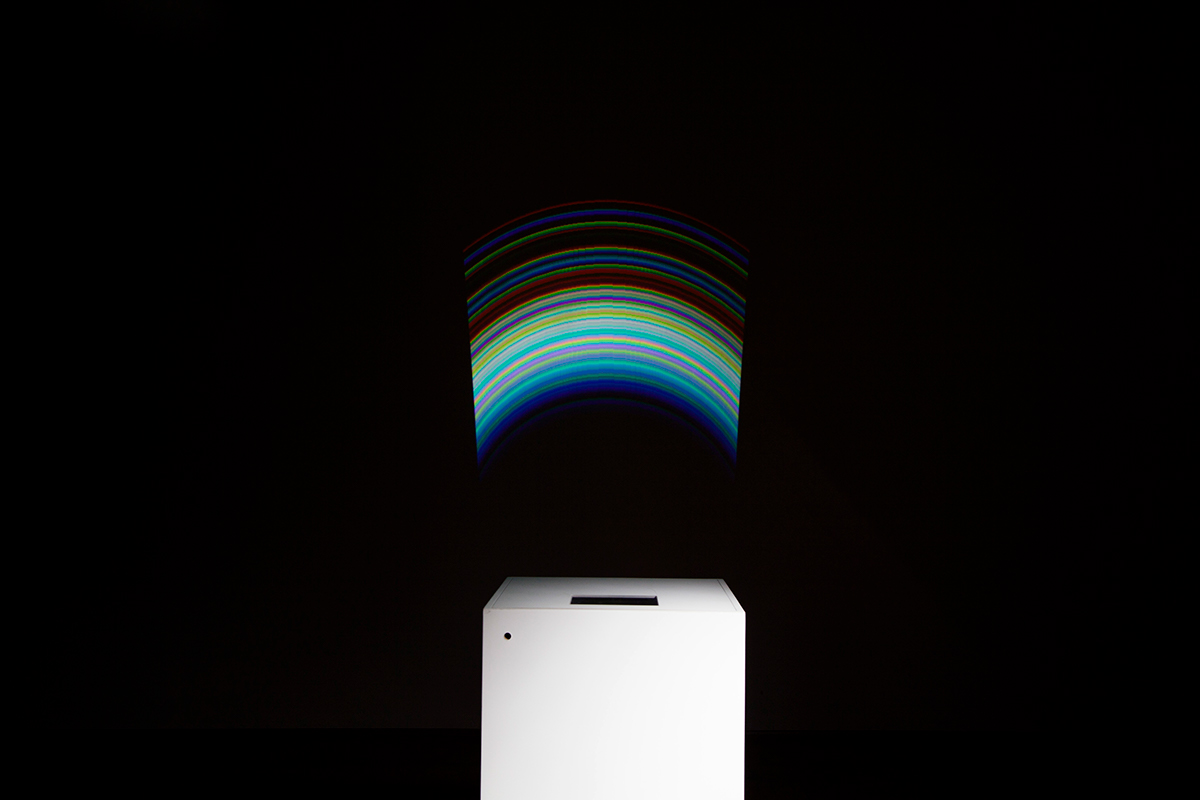
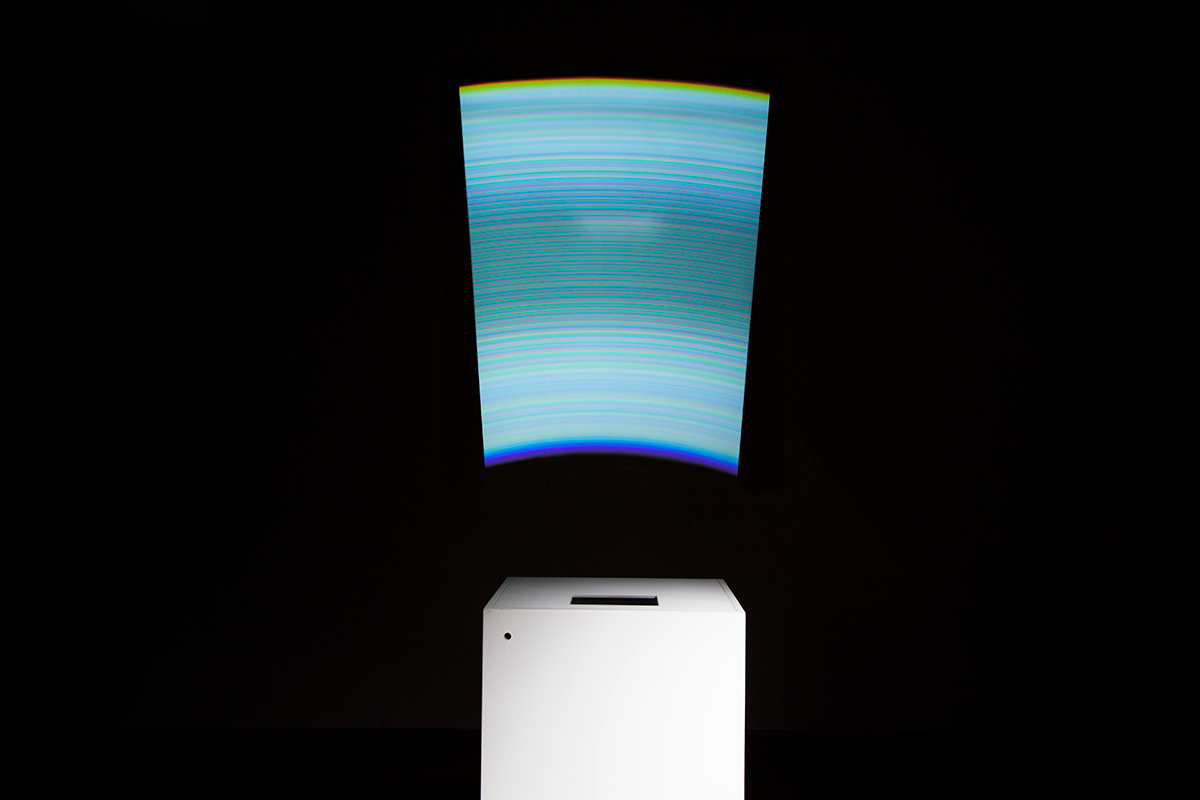
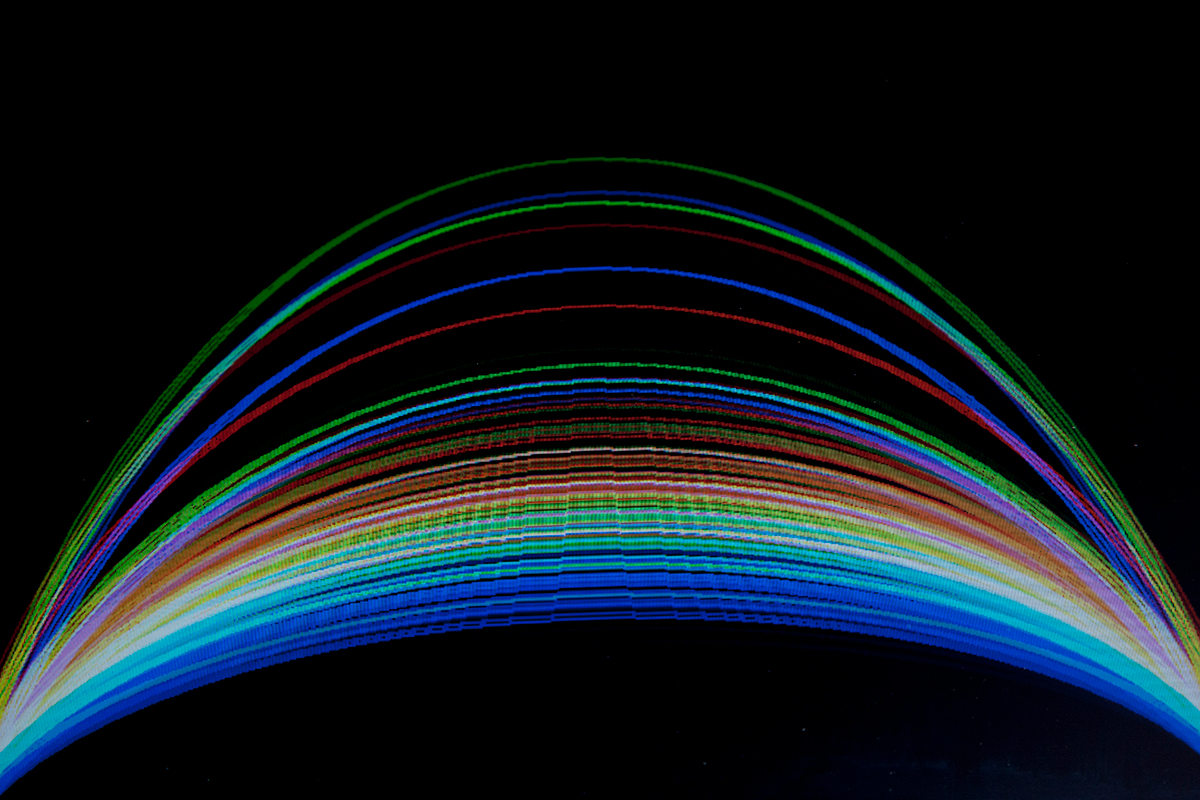
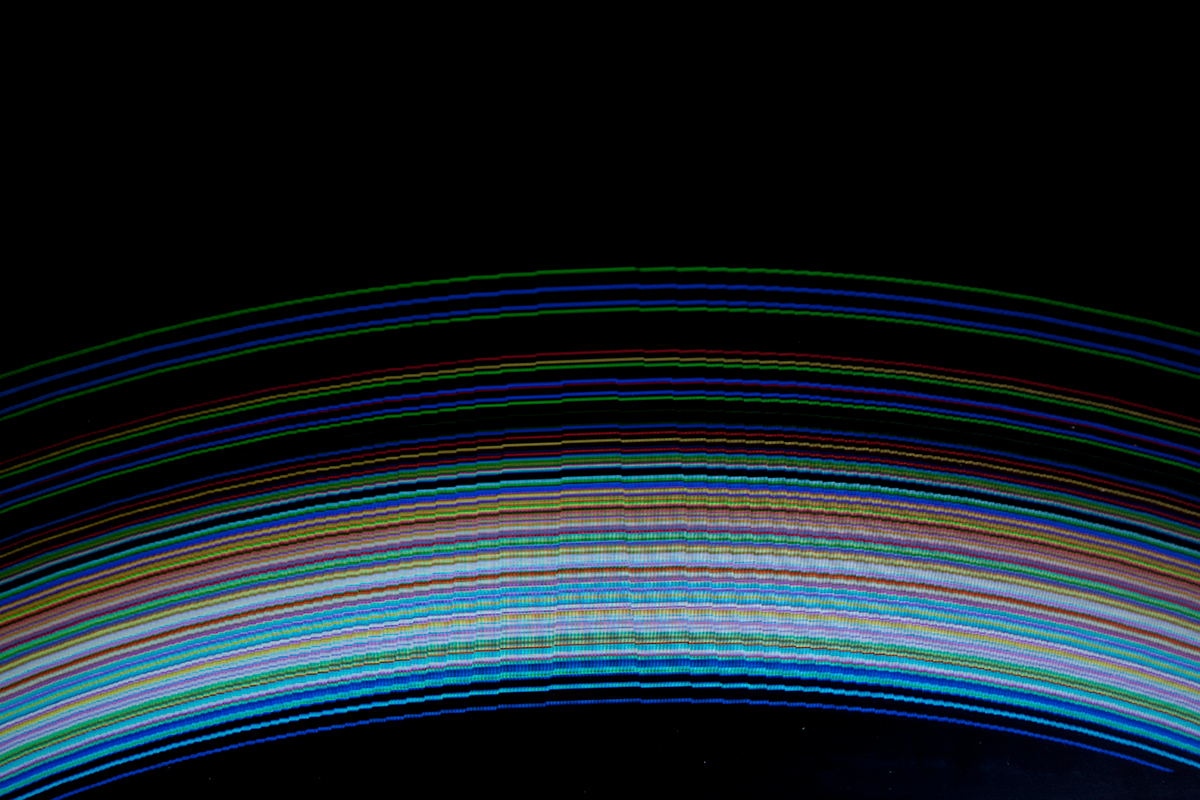
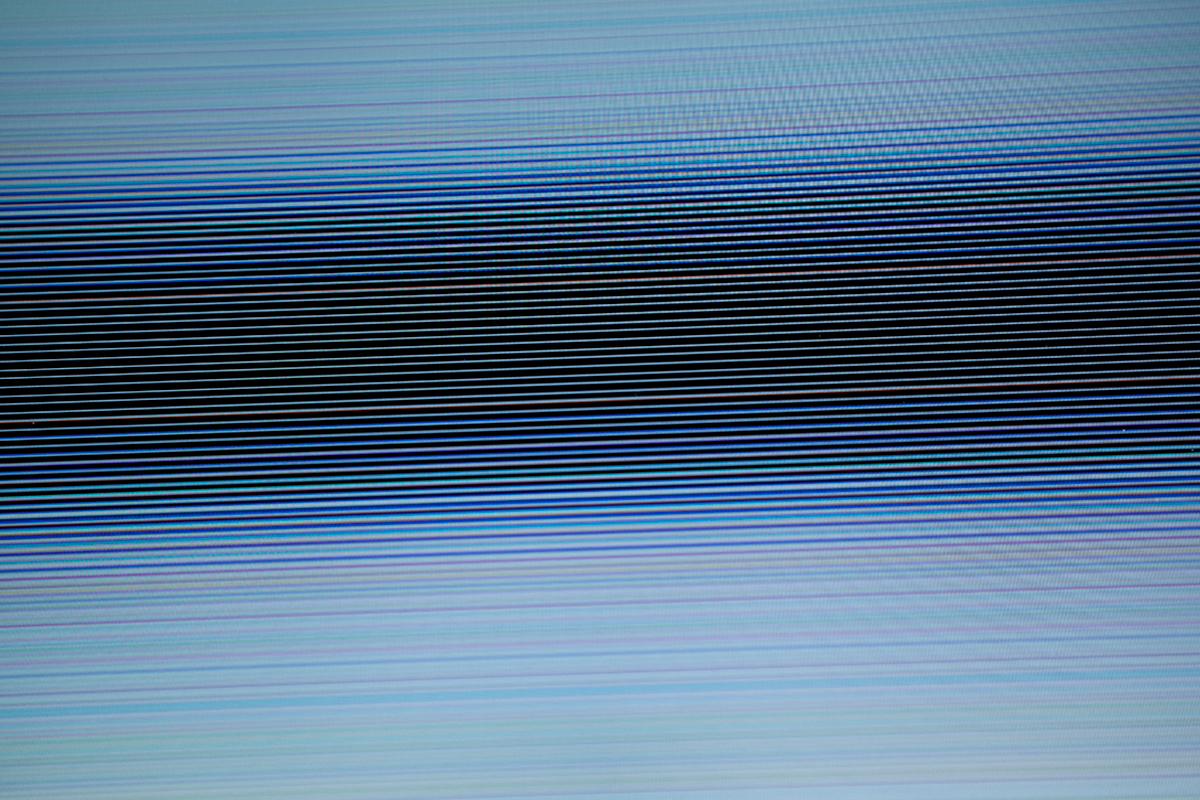
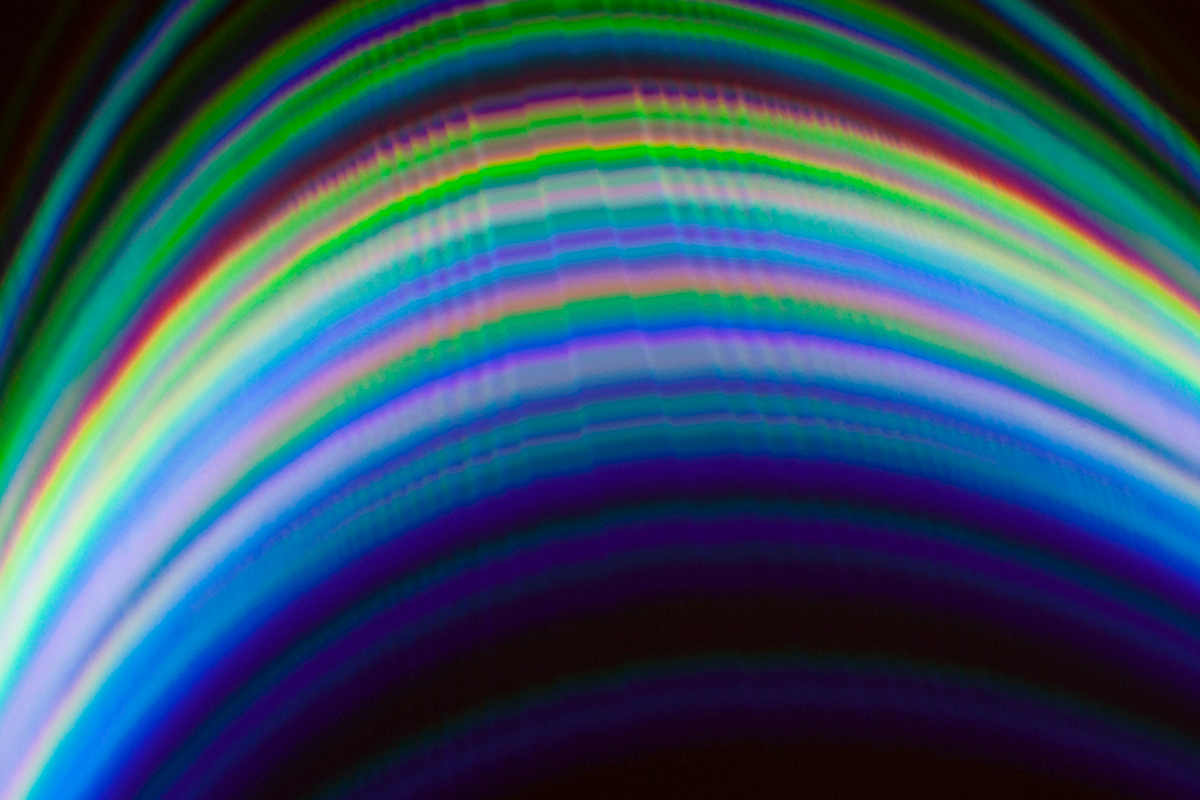
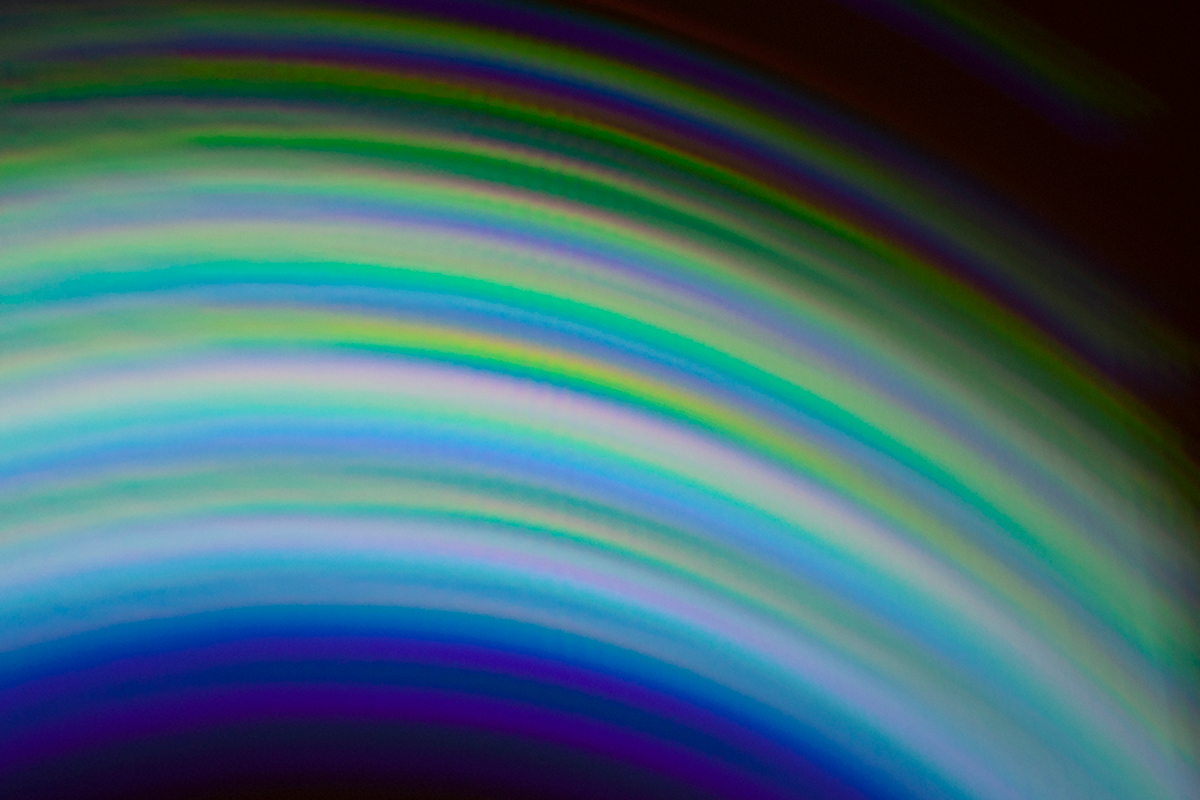
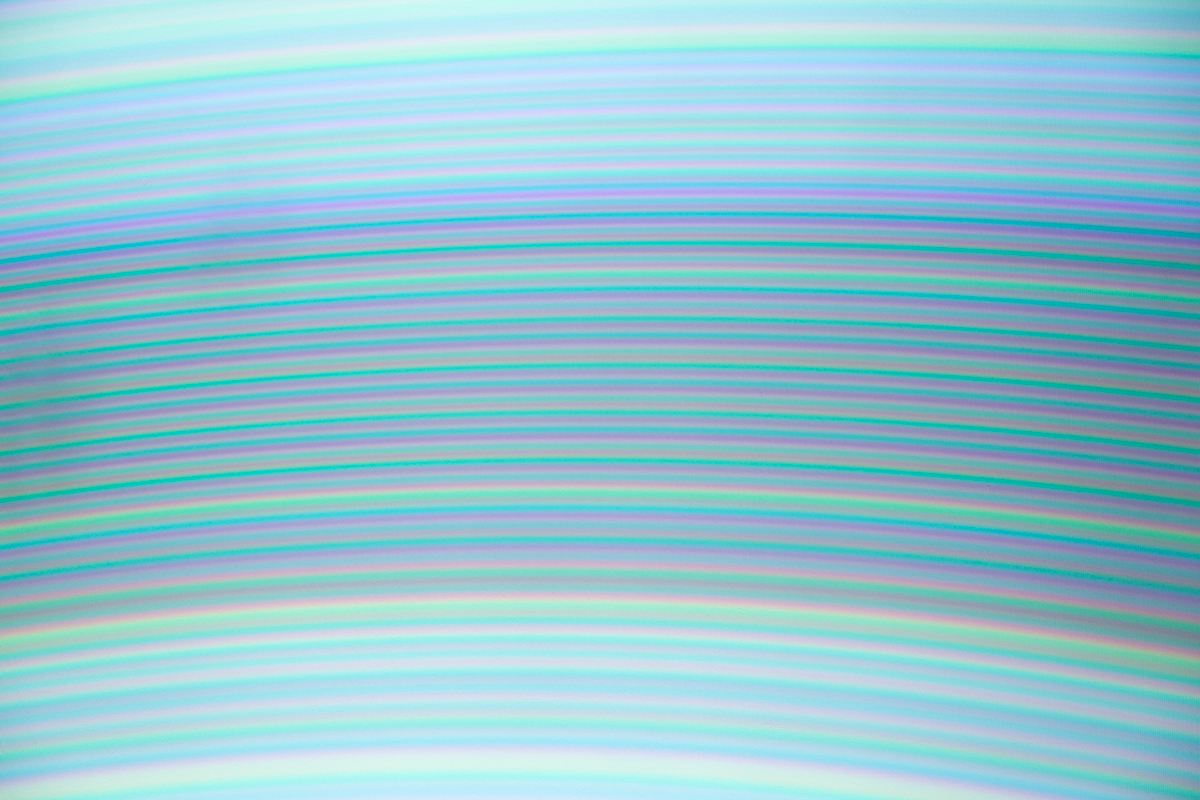
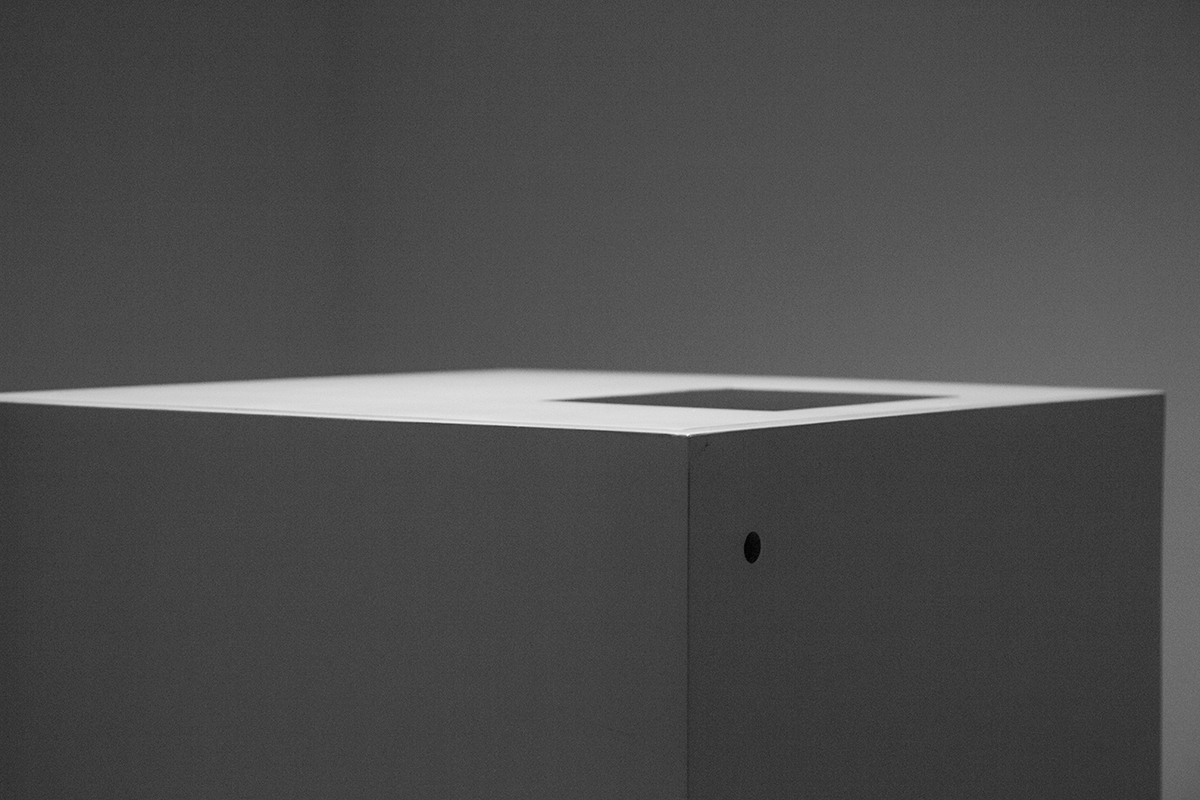


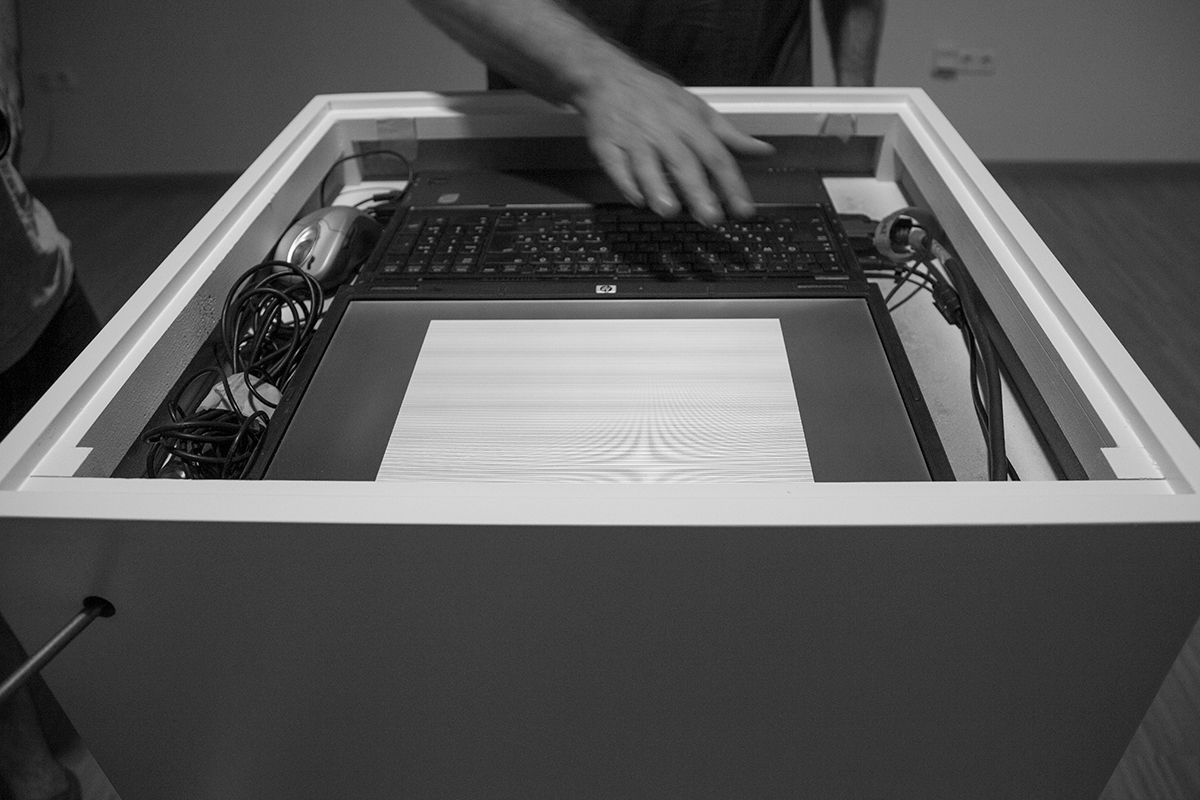
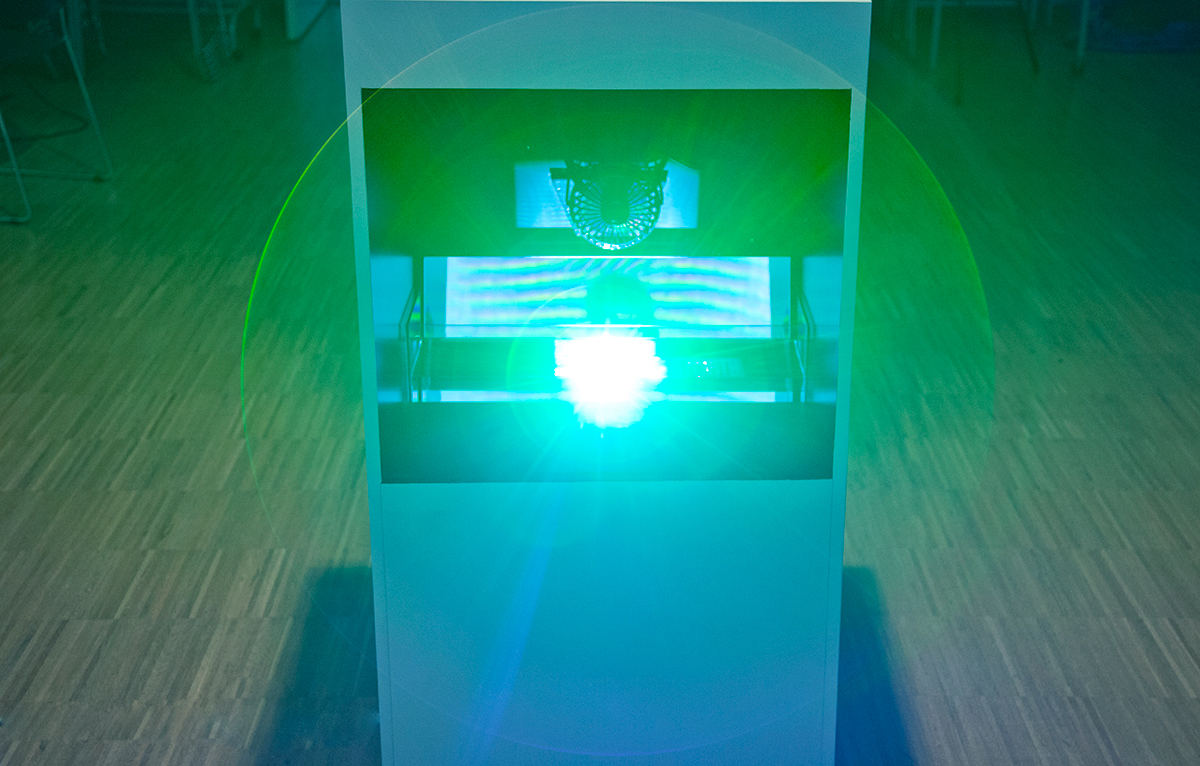
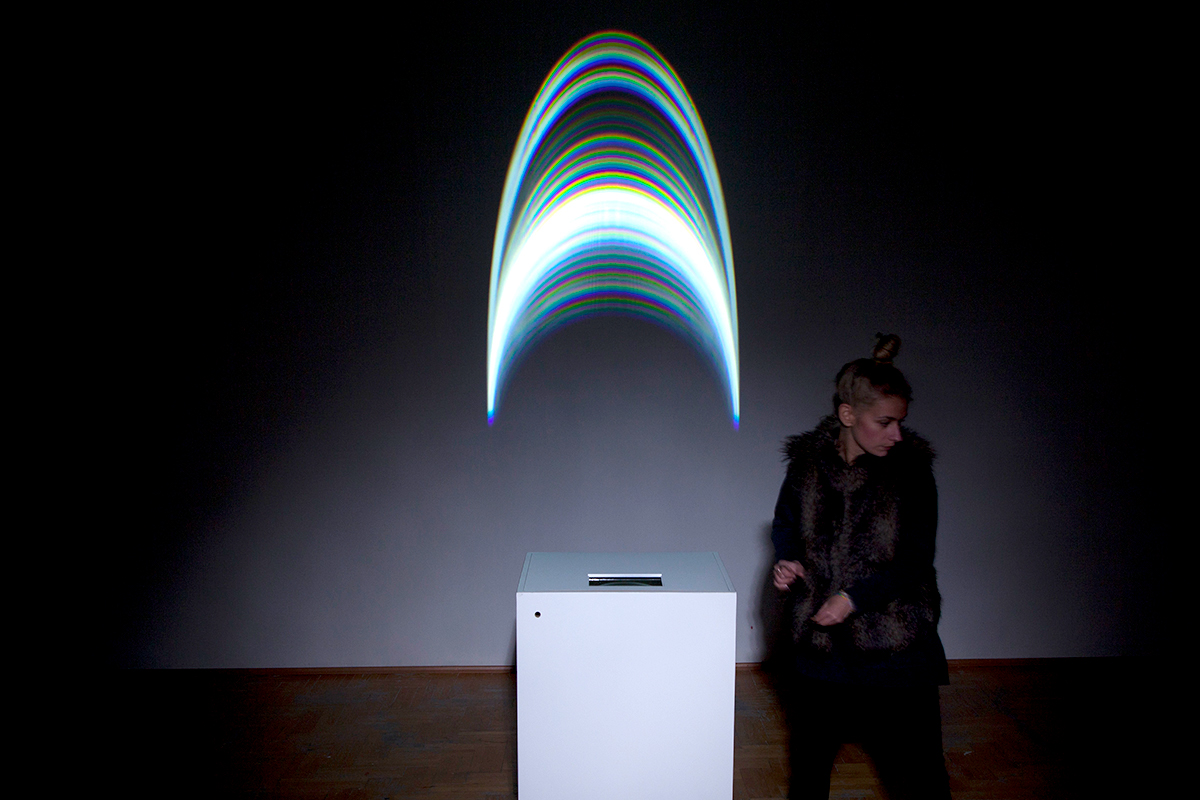
Concept & design
Anna Bárdy
Big thanks to
József Tasnádi — concept and code
Dániel Eke — object
Éva Szombat, Luca Hartai — photograpy
Péter Ráday — video
Graduation project
MOME
2013


